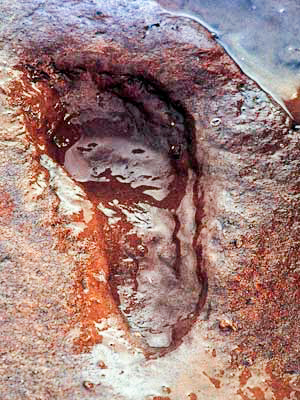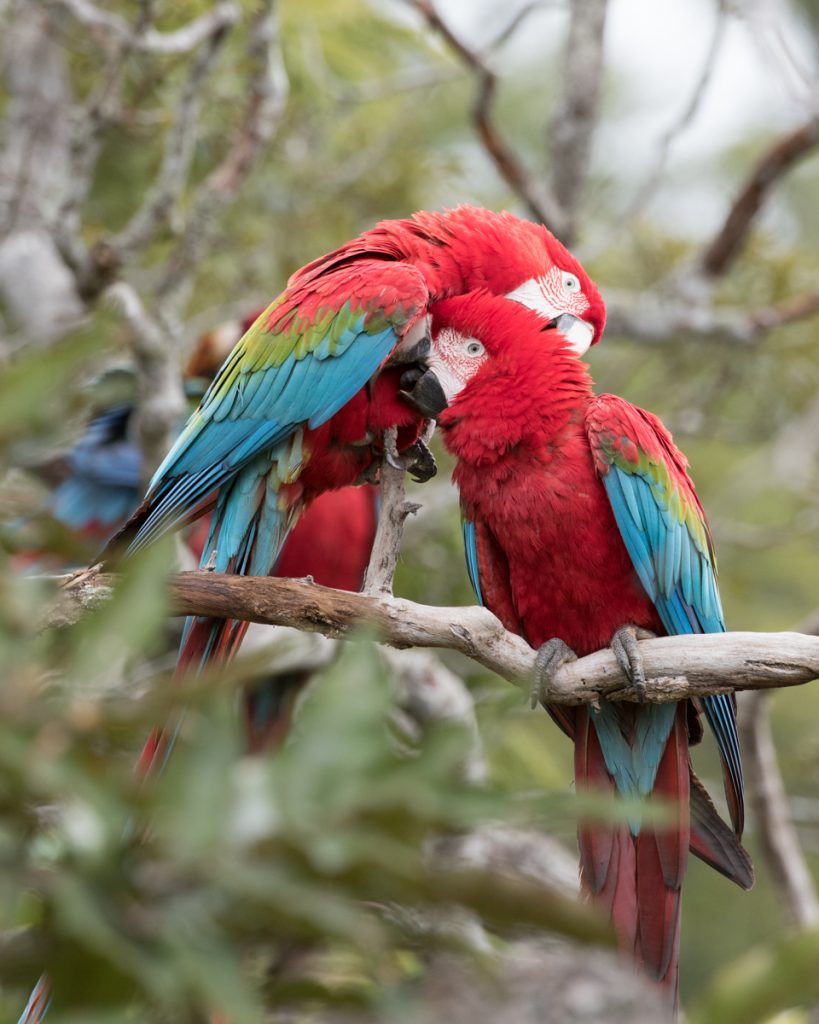
Madidi National park in Bolivia is incredible for many reasons, not least because of its remoteness and the challenge of travelling upstream through rapids from the nearest town of Rurrenabaque to get there. As you travel up river the crew at the front of the boat constantly check the depth of the water with a long cane and when the river gets too shallow for the engine, the crew jump out and push the boat until back in deeper water. When the river level drops in August and September it becomes increasingly more challenging and slow work for the boat crews to travel upstream into the forest to transport tourists to their beloved Madidi forest.




Navigating the shallows on the way to the Madidi National Park
Madidi National Park is part of the largest protected area on earth, it forms part of a Trans Boundary Protected Area, crossing into the Manu Biosphere Reserve in Peru as well as other protected areas including the Apolobamba mountain range. The task of protecting huge border areas of forest is incredibly difficult and Madidi has suffered from illegal logging and poaching during the eighties and nineties. Community projects such as Chalalan Eco Reserve embrace the passion of local people who share their love and knowledge of their home amongst the forest with guests and in doing so promote and help with the forests conservation.
Madidi National Park forms part of the upper amazon basin situated between the Andes mountain range and the Amazon lowlands below situated mainly in Brazil, forming an incredible array of habitats with many unique plants and animals. The forest is recognised as one of the most bio diverse regions on the planet and the local community is determined to protect the gift they have inherited from their ancestors for future generations and also to share with guests who Tavel to this remote and beautiful part of the world.




Long nosed proboscis bats
Rainforests never reveal their secrets quickly, becoming an expert here requires patience and years of experience to to see these unique animals in the natural habitat. An experienced guide is essential in the Amazon to see anything at all and the best ones have lived and worked in the forest all their lives. Even animals in plain sight can be difficult to see, a branch in a lake full of thorns turns out to be long nosed proboscis bats roosting during the day to avoid being eaten by monkeys as they forage through the surrounding trees. The guides are incredibly tuned into there environment, it becomes a standing joke just how good their eye sight is, even when they point out birds in the canopy they can still be near impossible to see.
To fully experience the Amazon you have to appreciate the bigger picture of the trees, insects, fungi and the host of other curious and often perplexing species. Rare glimpses of mammals and beautiful birds are just part of the theatre of the Amazon. For me you have to approach the Amazon with the curiosity of a child where literally each square meter around you is different to the next and immerse yourself into this cornucopia of life. The noise of the rainforest is also part of its wonder and intrigue, howler monkeys announcing the start of a new day, frogs and crickets the night and beautiful birds calling to each other amongst densely packed trees. Sounds come from every direction, even when you can not see any of those responsible.

Crested eagle 

Giant otter 
Kapok tree
The largest biomass of any animal in the rainforest are the ants, huge colonies constantly moving with equally huge nests. The industrious leaf cutter ants are fascinating to watch, carrying pieces of leaf often many times bigger than themselves and seemingly oblivious to anything around them. Only the rain sending the ants scurrying back to their nests. With so many ants in the rainforest it is no surprise that the giant anteater lives extensively across the Amazon, trying to see them however in thick jungle is the difficult part. If you would like to read more about anteaters please take a look at my article on anteaters.
Chalalan Eco lodge rotates its staff from the community of San José de Uchupiamonas within Madidi National Park, they are fiercely proud of their forest, they are the wisdom keepers and guardians, they want to preserve it for all and maintain their way of life. It is very clear when you speak to the staff at the lodge how passionate they are about not only the forest and the knowledge it holds of medicines and food but also of their heritage and community. The staff explain how it was in the forest before it became protected as a national park and how animals were poached and trees felled. It is different now they tell me, there is the infrastructure and the will to change things for the better.




Ariel views of the Madidi National Park
There are a variety of eagles in Madidi forest, when I visited there was a pair of crested eagles nesting not far from the lodge. They are amazingly impressive huge birds, a privilege to see in their natural habitat. The eagles prey mainly on tree dwelling mammals such as monkeys, sloths and opossums, as well as being opportunistic also feeding on iguanas and snakes. They fly with surprising grace through the trees for their size, their talons 3-4 inches long which they use to snatch prey from the treetops. At the lake close to Chalalan Lodge it is possible to observe monkeys which arrive every evening to drink and enjoy the coolness of the breeze out of the forest. The squirrel monkeys and the capuchin monkeys work together in mixed groups a behaviour called mutualism, the larger capuchins flushing out insects as they move through the trees and the squirrel monkeys acting as the alarm for predators as the capuchins feed.

Howler monkey 
Capuchin monkey 
Squirrel monkey 
Squirrel monkeys hunt together in a mutual way with capuchin monkeys
I feel great hope for the future of the Madidi rainforest and the people who live there in the local communities. The Chalalan Eco Lodge stands as an example of what is achievable when passion, determination and love for the forest are in such abundance. To support the forest and the communities who live there, they need people to visit this remote part of Bolivia to share with other people how amazing this habitat really is and why we need to value it at at a time where everything seemingly requires a value to justify it. To live in nature just for a small amount of time is massively beneficial, it seems you can breath just a little deeper in no time at all.
If you know of other communities around the world that share their resources in an inspirational way please contact Kirk at info@journalearth.com to share your story and inspire others.





